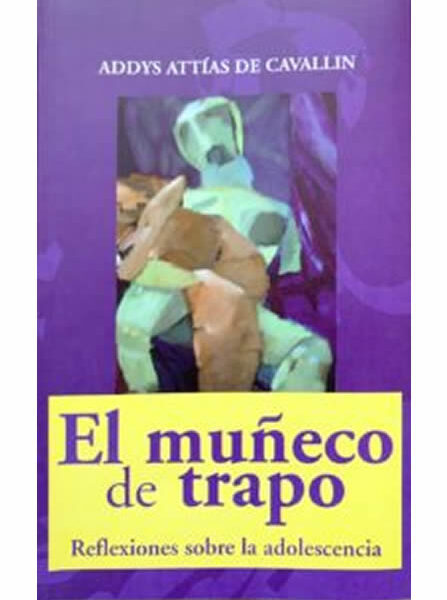by Stavroula Beratis
30 April 2006
0 comments
In spite of the fact that the term psychic transformations has not been used by Freud as a conceptual psychoanalytic term officially, it is obvious that it is a concept present in his thinking, by which he was troubled all his life. In earlier accounts of analytic therapy (1), he gives special importance to the alteration of the ego, which is to be brought about by the analyst as a result of the undoing of the patient’s repressions, and of reexperiencing the old infantile conflicts in the present, in the transference. The transference becomes the new “battlefield” for the patient’s old conflictual experiences. Among the changes observed is the freeing of libido from symptoms, which becomes serviceable to the ego, and the permanent reorganization of the patient’s mental life at a higher level of development protecting him from new manifestations of illness.
Some years later (2) he elaborates further on the changes occurring during the psychoanalytic process as aiming at strengthening the ego to make it more independent from the superego, increase its range of functioning, perceptual and executive, and increase its control over the id and the id-energy. “Where id was, there ego shall be”.
In the subsequent years Freud becomes much more skeptical about psychic transformation in the psychoanalytic process, at least in regard to the extent and the duration of the achieved alterations in the ego, as we see in Analysis Terminable and Interminable (3). In this work he seems to visualize as a central element of psychic transformation the “taming” of the drive by the ego. Regarding the “taming” of the drive he states, that we don’t know how this is achieved about and we must call the “Witch Metapsychology to our help; without metapsychological speculation and theorizing – I had almost said phantasying – we shall not step another step forward” (S.E. Vol. XXIII, p. 225). Also, he claims once more that “the real achievement of analytic therapy would be the subsequent correction of the original process of repression, a correction which puts an end to the dominance of the quantitative factor”. Again and again he states, throughout this work, that transformation has only partial success and whatever has been formed earlier, clings tenaciously to its existence. Early defences function as resistances not only to the making contents of the id conscious, but also to the analysis as a whole. Also, resistance to alteration may be due also to “adhesiveness of the libido” or psychical inertia (4). This psychical inertia is the result of fixation and is due to early linkages between drives and impressions, and the objects involved in these impressions. Another factor he relates to the achievement or not of transformation in the psychoanalytic process is the interaction of the two drives, of Eros and Destructiveness, their tendency to mingle and diffuse, which involves not only the id but also a constant interplay of forces between id, ego and superego.
In the Outline of Psycho-Analysis, and specifically in The Technique of PsychoAnalysis (5) in which Freud appears relatively more optimistic about the successes of psychoanalysis, he elaborates further on the diffusion of the two drives, which allowes for excessive quantities of the destructive drive to be directed inwards, creating a strong resistance to the task of analysis. He introduces, also, the resistance due to an unusually cruel superego, which demands the patient to be punished and remain ill. In this work he draws our attention to the timing and dosage of interpretation. The patient should be prepared gradually and carefully before we choose the suitable moment to increase his knowledge, and we should not overwhelm him with interpretations, which instead of promoting the analytic process, would lead to strengthening the resistances. Once again Freud states that the aim of the work of psychoanalysis is to achieve a normal level of functioning for the patient’s ego, and to transform what has become unconscious and repressed into preconscious material, under ego control. He concludes that, in spite of its limitations, the technique of psychoanalysis is the best tool we have for the moment.
Freud was aware that the work of analysis involves two people, the patient and the analyst, and is carried on “in two separate localities” (6). He focused on the exploration and understanding of the patient’s unconscious, but the tool for this serious and hard work is the analyst himself who through the transference becomes the object of the analysand’s desires and conflicts, as well as object of repetition.
Freud set the foundation for the exploration of the subject of psychic transformations, a broad and central subject for our work as analysts, which can be examined from different perspectives in the extended and multifaceted scenario of current psychoanalysis.
Bion (7) conceptualized transformation as related to both topology and psychoanalytic process. Transformations occur in two localities, both patient and analyst, and are influenced by emotional links, although it is expected that the ideal analyst recognizes them and never acts out his countertransference. Complementary to the concept of transformation is the concept of invariance, which is defined as the unaltered part on which recognition depends. Change of elements (transformation) is recognized because of their links to their invariants. Invariants vary according to the analyst’s main theoretical position, conveying different meaning to the same material. The psychoanalyst’s technique is analoguous to that of a painter, who transforms the analytic experience into an interpretation, meaning representation. Bion distinguishes between the process of transformation and the final product of transformation, while the model of transformation is conceptualized as occurring in successive time-space lapses, or successive cycles involving patient and analyst.
In the present day psychoanalysis we accept that the psychic transformations in the psychoanalytic process are the result of a constant interplay between the two partners’ mind, the patient’s and the analyst’s; analysis takes place in two psychic localities. The analytic couple co-constructs mutative moments during the analytic dialogue in an effort to elaborate and bind excitations, to make analytic objects, that is, meanings.
Transformations can be categorized as macroscopic and microscopic, as global and minute, as short-term and long-term, as progredient and regredient. They have a manifest content and a latent one. Interesting questions that can be raised are: what is the nature of this relationship, how the links between the two contents can be observed, and what is the economic and dynamic constellation behind the phenomenology? What is the contribution of the implicit preconscious private theories of the practicing psychoanalyst on the transformational process? (8)
Some consider psychic change as a major goal in any psychoanalysis. Is there a parralel, reciprocal psychic movement between transformation and psychic change? Is psychic change the final product of a transformational process or many pieces of transformation constitute the final puzzle of the psychic change?
Dreams having an imaging function offer an excellent tool to study psychic transformations in the psychoanalytic process. The text of a dream contains information about the end result of a transformational process and about the process itself. We can observe the interplay of unconscious derivatives through the work of preconscious. Dreams can offer unsuspected information about the repressed unconscious, while at the same time they may become quite revealing about the psychic functioning at the time, and about preconscious thought processes (9).
A very central and old problem for psychoanalysis is the relationship between perception and representation (10). How we can study the transformation of this ever changing reciprocal process and what information we can infer about psychic activity in general?
Transformation in the direction of renouncement of omnipotence is another major issue. It is linked to changes of traumatic perceptual traces, changes of imagos of objects, awareness of one’s projection of omnipotent wishes, responsibility for one’s drives, the emergence of internalization and identification, and the emergence of the capacity to be alone in the presence of the analyst (11).
Transference and countertransference remain the “battlefield” in which infantile conflicts are reexperienced in the present. What kind of reciprocal transformations we can observe in the two psychic localities, the patient and the analyst, and how we can conceptualize them according to the various psychoanalytic theories?
These and several other issues will be open for exploration in the forthcoming 19th – the 5th New Style – European Psychoanalytic Federation Annual Conference, which the Hellenic Society is glad to host in Athens, 6-9 April 2006.
Stravoula Beratis.
President HPS.
© 2002-2006 European Psychoanalytical Federation – Data Protection Policy


